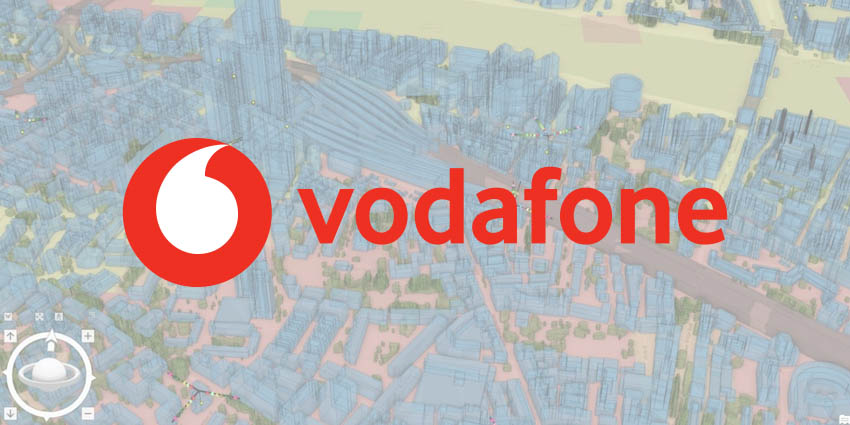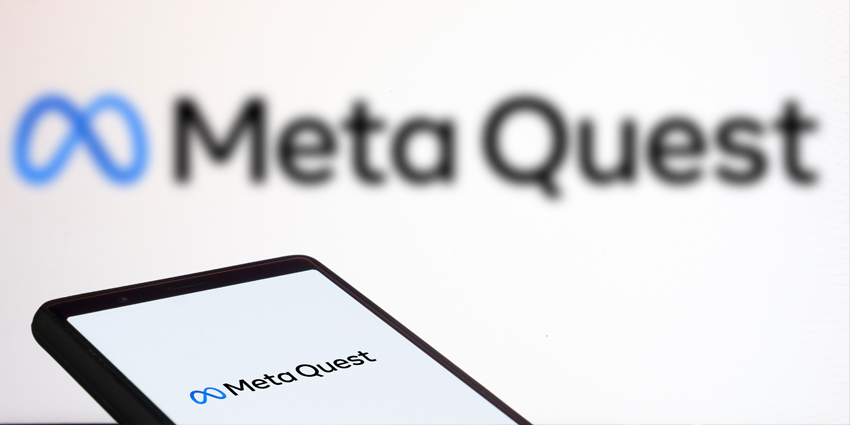Digital twins have empowered massive tech giants in recent years, offering them cutting-edge tools to enhance operations.
Companies such as Siemens and NVIDIA have already begun developing industrial metaverse platforms to monitor factories and facilities remotely. These have created unprecedented operational efficiency amid the COVID-19 pandemic and the digital transformation of global enterprises.
Vodafone, one of the world’s leading telecom companies, has backed digital twins to empower network operators and engineers. Here’s a closer look at how the firm leverages digital twins for its business.
Global Networks, Local Insights
Across the company, Vodafone’s digital twin has mapped over 40 million environmental features with Esri, an advanced platform for monitoring physical spaces.
The programme provides 360-degree digital twin views of Vodafone’s networks via mobile devices and PCs. Engineers can also virtually position mobile websites and determine where to upgrade or boost infrastructure capacity. It can also outline whether nearby obstructions such as trees, mountains, or others to reposition networking equipment.
The digital twin system actively monitors over 500,000 networking tools, including antennae and visualised data, to remotely inspect base stations before conducting on-site work.

Dr Rebecca King, Vodafone’s Geographic Information System (GIS) Lead, said in a statement,
“A customer’s mobile phone might cut out due to what we call clutter. This is usually down to the construction of new buildings or seasonal tree growth interfering with the signal strength. We like to visualise these in a digital format so that we can better plan the expansion of our network around them”
Vodafone plans to test its digital twin platform across Germany, Turkey, and others, where systems can replicate fixed and mobile broadband network equipment.
The company’s Tech 2025 strategy aims to streamline its European operations with automation tools to boost demand across the network when needed.
Vodafone’s ‘on premise’ cloud computing technologies are set to double by 2025 to accommodate European network growth rates. This will future-proof Vodafone’s networks with a scalable platform for monitoring and adjusting demand at the edge of networks.
The platform will also incorporate artificial intelligence (AI) and machine learning (ML) to support workforces planning and operating networks. Engineers and staff can improve data centre temperatures and save power at off-peak network usage times, among others.
‘Minecraft for Data Scientists’
According to Vodafone’s Lead Architect Boris Pitchforth, digital twins allowed his enterprise an “unprecedented understanding” of its entire UK mobile network.
He said, “[It] is like Minecraft for data scientists.”
Continuing, Pitchforth explained,
“We can be smarter and faster about how and where we add new 5G features, and target capacity increases with greater precision. There’s also the added benefit of being able to reduce our carbon footprint as our engineers won’t need to make as many site visits, especially to masts in remote areas”
Geographic Information System (GIS), the UK’s wing of US-based mapping firm Esri, has provided satellite data for terrain mapping of crops, transport, and other environmental objects.
Pitchforth concluded that digital twins did not need to “exactly replicate objects in the real world.” Rather, the system needed to map object dimensions to “angle the signal to give customers the best possible connection,” he added.
“The simpler the map is, the faster it loads,” he said.
Spatially Connected to ‘New Levels’
Esri’s ArcGIS platform provides enterprise-grade solutions for multiple use cases, including wildlife conservation and crime mapping.
It merges key technologies such as image exploitation, web mapping, real-time 3D (RT3D) data, and spatial data science. It can also analyse large batch volumes to expedite big data set processing times.
King explained that ArcGIS Enterprise allowed her company to add spatial data to current data sets, leading to “new levels of location intelligence.”
She said: “Through our digital twin, data can now be visualised in 3D and shared easily with multiple teams.”
Additionally, Vodafone is expected to roll out massive multi-input, multi-output (MIMO) network features. This aims to upscale capacity for connected devices set to reach 30 billion by 2025.
Explaining this further, Pitchforth stated that “a national digital twin of this type simply wasn’t possible” a few years ago.
He continued,
“But the combination of ArcGIS Enterprise in AWS cloud means large-scale digital twins can be a reality, providing a secure, scalable cloud option for enterprise data visualisation and geospatial analytics. Similar projects in the utilities sector, for example, traditionally focus on smaller areas but we wanted a national model in line with our network”
Use Cases Empower the Enterprise
Numerous companies have begun leveraging digital twins to monitor and optimise global infrastructure. Several featured enterprises have revealed their solutions to modernise and streamline operations.
Evolved Engineering
Executives from Darkpulse, GE Digital, TeamViewer, and Accenture explained the massive potential for the industrial metaverse. The four executives revealed fresh use cases at a recent Industrial Internet of Things (IIoT) online event in early November.
Several examples included monitoring wind turbine performance across national grids. They also added the tools for operations and maintenance (O&M) for the Honcut intelligent bridge in California.
Digital twins allowed engineers to monitor bridges for issues, improve efficiency, and reduce their carbon footprints with fewer deployed staff. They could also develop improved infrastructure with time-lapsed views of physical components for architects and mechanical engineers.
Predictive Analysis
Unity Technologies, the world’s largest platform for real-time 3D content development, also explored the benefits of digital twinning for the enterprise.
At the Immerse Global Summit (IGS) Miami 2022, Dave Rhodes, Senior VP and GM of Digital Twins, told audiences how the technology could digitally transform industry verticals. Organisations such as the Vancouver Airport Authority leveraged them to reduce airport passenger congestion.
Wind farms also used digital twins for predictive analysis, allowing engineers to time-slice simulations at geographic locations. This allowed them to evaluate the performance and wind plane sizing of wind farms to upgrade current and future planning efforts.
He said at the time: “This future that we talked about is actually happening right now because each and every one of you is contributing to it. You’re building that digital force of experience that’s going to bring great things to our world and the next generation of people.”







